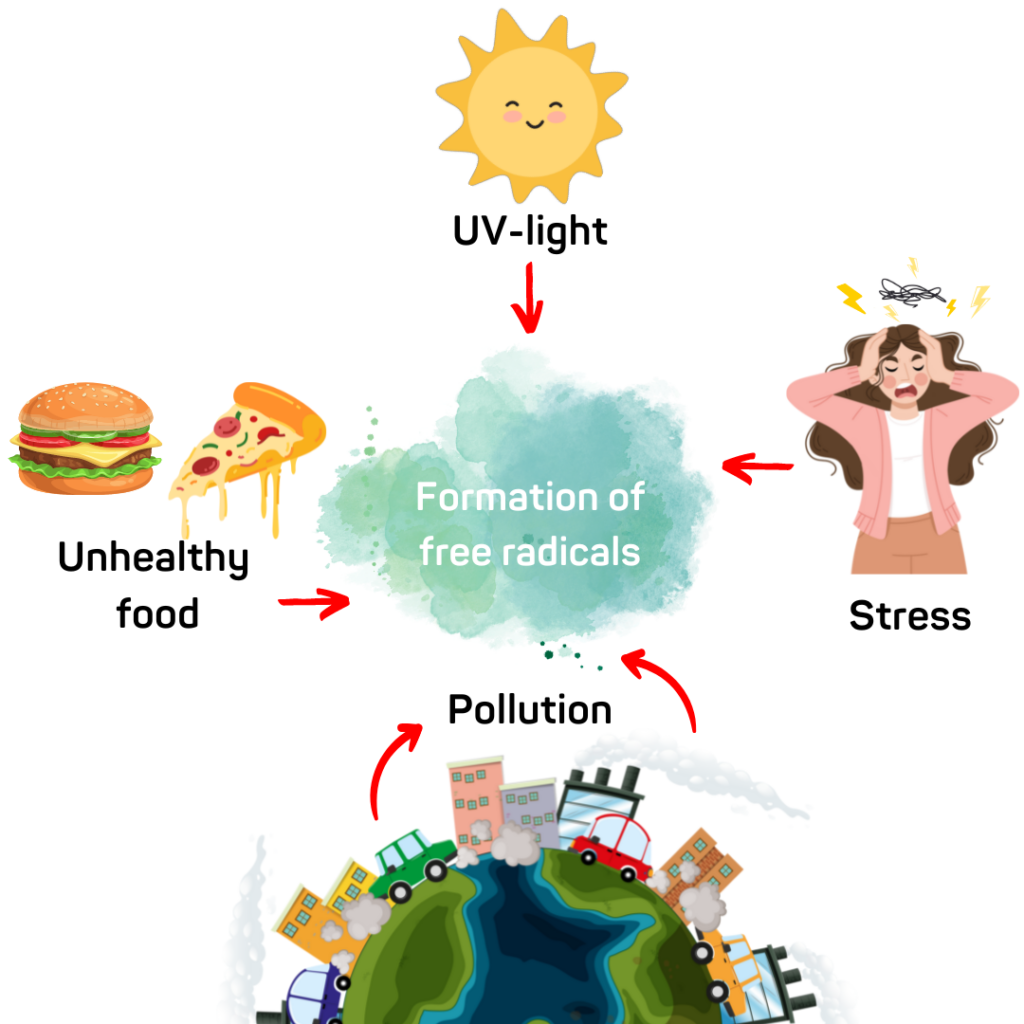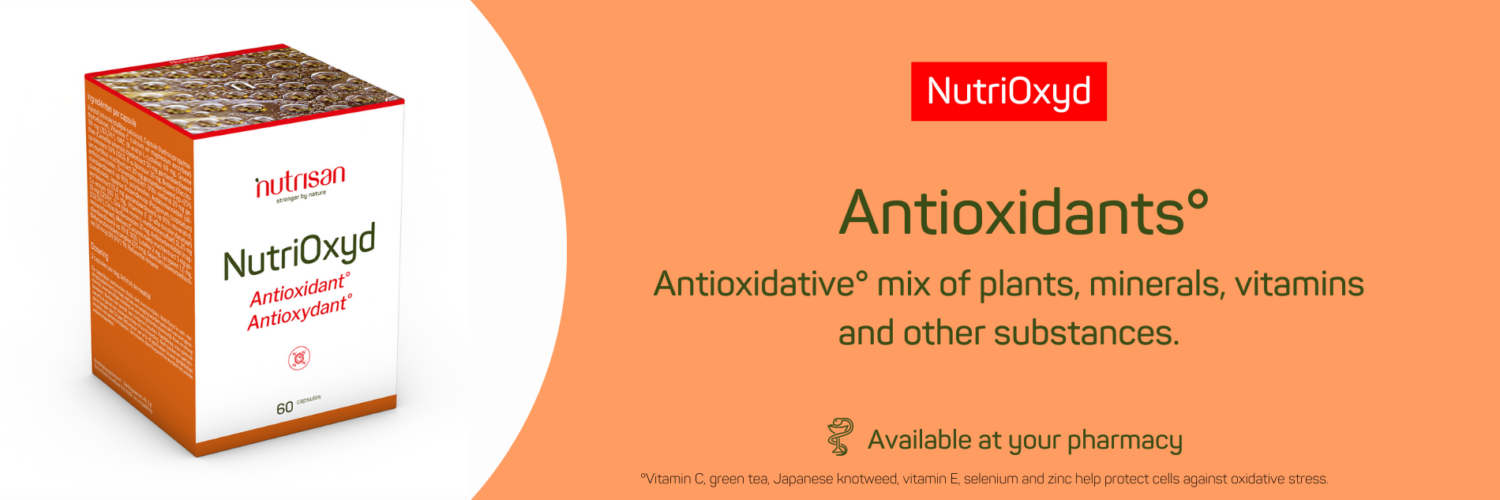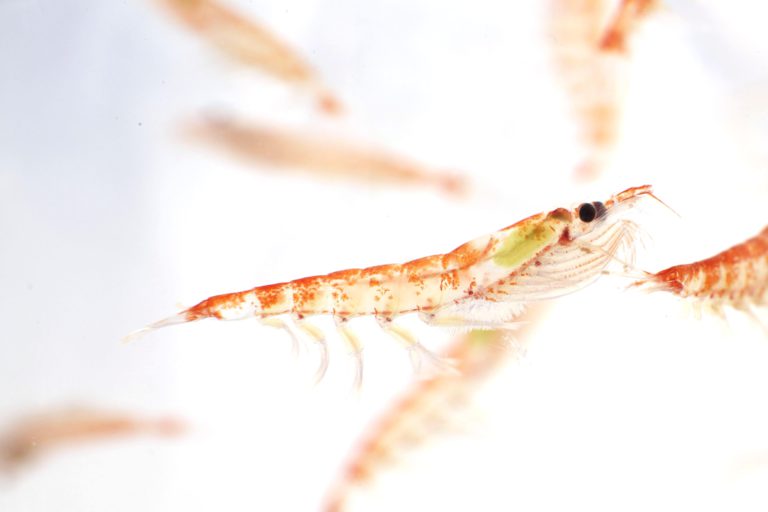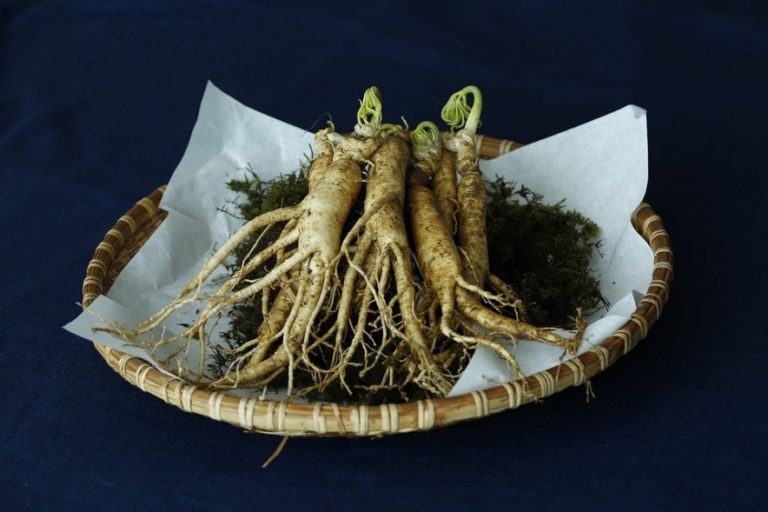Antioxidants can act in different ways, but they all have the same goal, namely to protect the body against oxidative stress by fighting free radicals.

The difference between antioxidants, free radical and oxidative stress
Free radicals are unstable, highly active molecules that damage body cells and tissues. These radicals are produced naturally in the body by various processes such as food processing, sunlight and toxins. Normally, the amount of radicals produced in the body can be neutralized by the body’s own antioxidants. They protect tissues and cells against the damage of free radicals.
In everyday life, however, we are also exposed to free radicals. This can disrupt the balance of the body’s natural antioxidants and lead to oxidative stress. One speaks of oxidative stress when the radicals cause damage to the body tissues or cells. It is therefore important to ensure that the body always has sufficient antioxidants available.

What types of antioxidants are there?
Antioxidants can be water-soluble, fat-soluble or both. The first group performs its function outside the cells while fat-soluble antioxidants work at the level of the cell membranes. Finally, the last category, the water and fat-soluble antioxidants, are both active at the level of the cell membranes and inside the cells.
Antioxidants can be vitamins, minerals, proteins, enzymes as well as phytonutrients. Below is an overview of the most important antioxidants in each category.
Per category:
- Vitamins: Vitamin C, Vitamin E, Vitamin K
- Minerals: Selenium, Zinc, Manganese
- Proteins: Alpha-Lipoic acid, Cysteine, Glutathione
- Enzymes: Coenzyme Q10
- Phytonutrients: Green tea, Turmeric, Ginkgo Biloba
Some antioxidants in the spotlight
1. Astaxanthin
Astaxanthin is a natural carotenoid that gives krill, salmon and flamingos their red color. Moreover, it is known for its very high antioxidant capacity. In food you can find it mainly in krill oil.
Because of its structure (water and fat soluble) astaxanthin can bridge a double layer cell membrane, providing a unique membrane protection (both on the cell membrane and in the cell) that increases its resilience to oxidative stress.
2. Blueberry
Blueberries are one of the most powerful antioxidants in our diet. They contain flavonoids, vitamin C and vitamin K. In addition to their antioxidant capacities, they also support the immune system.
3. Coenzym Q10
Ubiquinol is the bioactive (reduced) form of coenzyme Q10 and a body’s own antioxidant. This form is produced in the body via conversion from ubiquinone (oxidized coQ10). The ability to convert ubiquinone into ubiquinol decreases with age. That is why it is useful for people over 45 to take ubiquinol directly as a dietary supplement. People who exercise intensively also have a higher need for ubiquinol.



